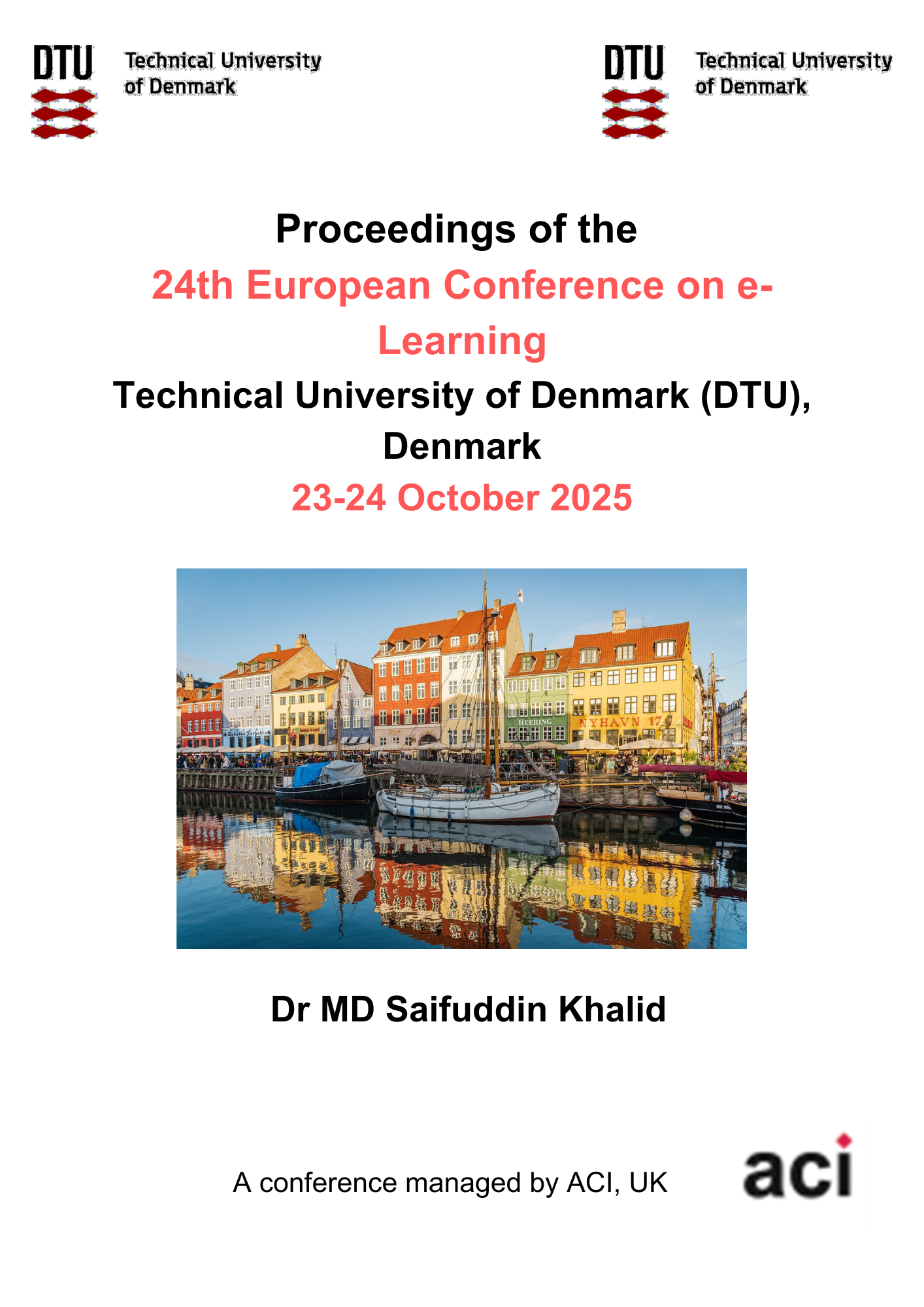A Case Study on Transition from Teacher-Centered Learning to Online, Asynchronous Learning
DOI:
https://doi.org/10.34190/ecel.24.1.4269Keywords:
distance education, online asynchronous learning, Self-directed learning, teacher-centred learning, educational paradigm shiftAbstract
The transition from teacher-centered to online, asynchronous learning represents a significant shift in educational paradigms. Traditional teacher-centered approaches, characterized by direct instruction and passive student roles are being increasingly replaced by asynchronous online models that prioritize learner flexibility and engagement. This shift allows students to access content at their own pace and encourages self-directed learning. While the flexibility of asynchronous formats can empower students and accommodate diverse learning styles, the lack of real-time interaction may lead to challenges in motivation, time management, and reduced opportunities for immediate feedback. Adapting to online, asynchronous learning can be challenging and can have varying levels of ease and difficulty. There is a lack of information in this regard when it comes to the learners’ perspective. This study attempts to provide insights on the shift from traditional learning to modern online, asynchronous learning by analysing the results of a group of students which followed an elementary mathematics module as per the requirements of a degree programme in information technology offered by the University of Moratuwa, Sri Lanka. The cohort of students came from varying backgrounds and streams of study. However, all students in the group had obtained at least a credit pass for mathematics at the GCE Ordinary Level examination (secondary school) and passed the GCE Advanced Level (high school) examination. The preliminary results indicated a significant positive correlation (r=0.287, p<0.001) between the marks obtained for mathematics at secondary school and marks obtained at the university. The findings of this study provide insights on the learners' experience on transition from teacher-centered learning to online asynchronous learning. Furthermore, the study proposes best practices to be adopted to ensure a smooth transition.





